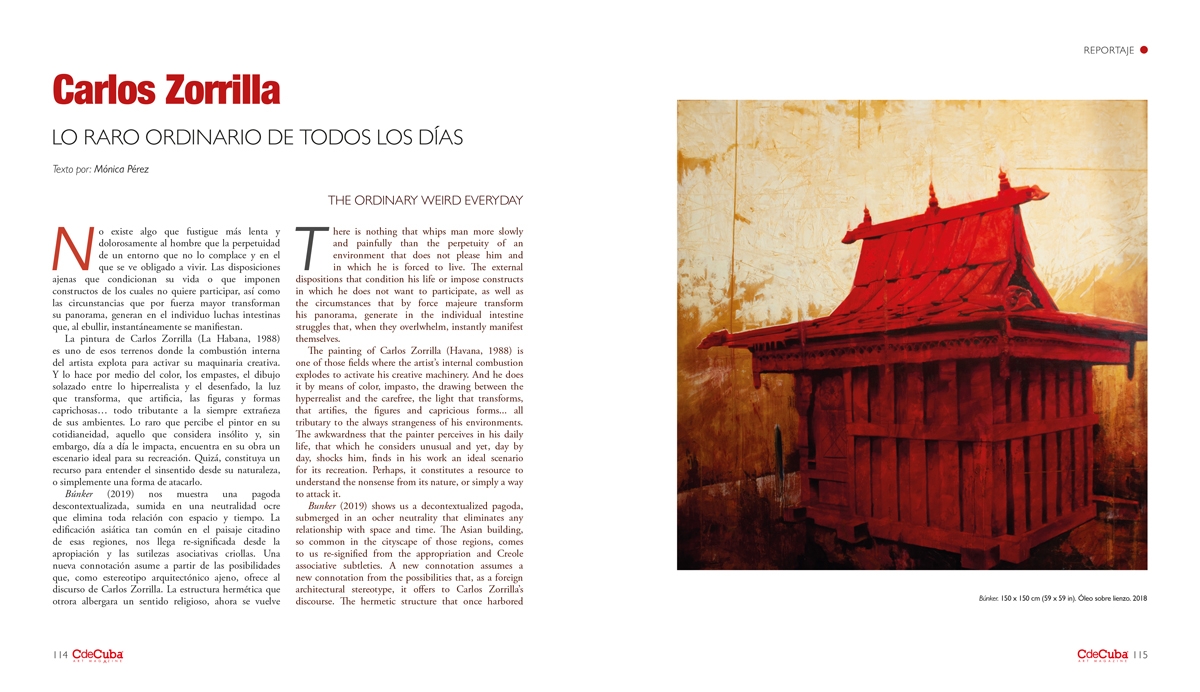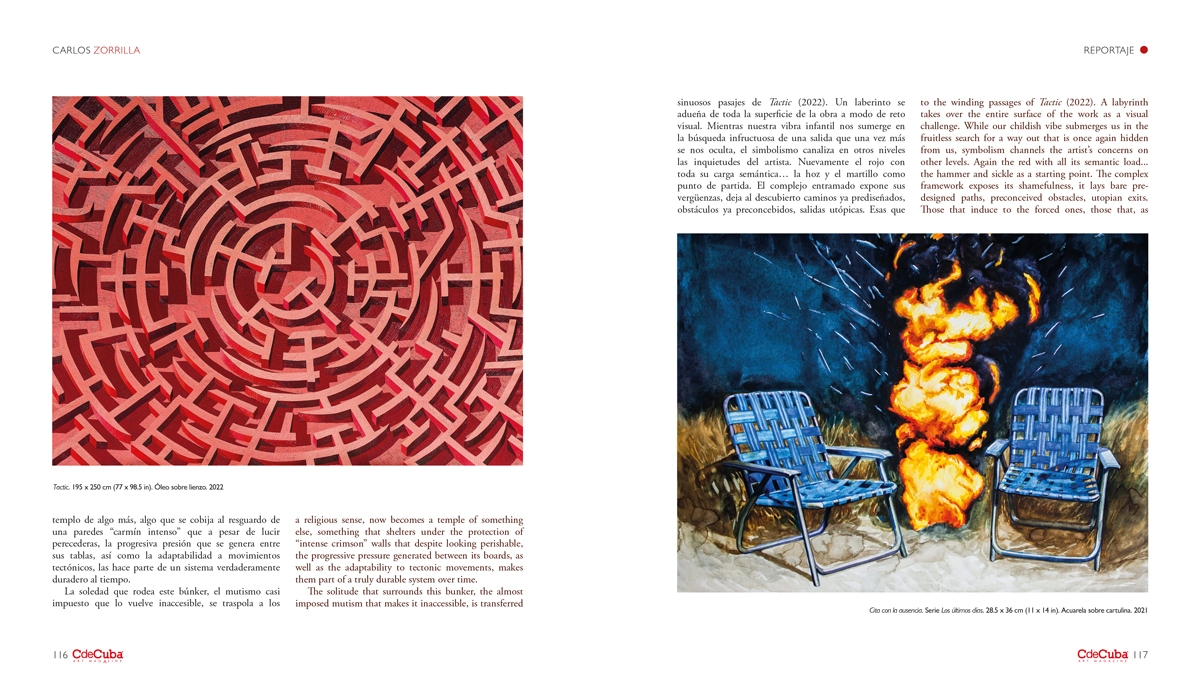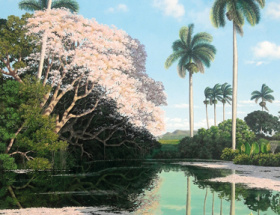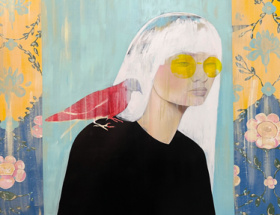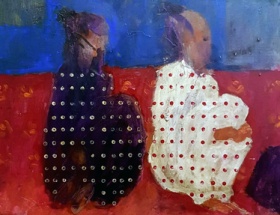The Ordinary Weird Everyday
By Monica Perez
There is nothing that whips man more slowly and painfully than the perpetuity of an environment that does not please him and in which he is forced to live. The external dispositions that condition his life or impose constructs in which he does not want to participate, as well as the circumstances that by force majeure transform his panorama, generate in the individual intestine struggles that, when they overlwhelm, instantly manifest themselves.
The painting of Carlos Zorrilla (Havana, 1988) is one of those fields where the artist’s internal combustion explodes to activate his creative machinery. And he does it by means of color, impasto, the drawing between the hyperrealist and the carefree, the light that transforms, that artifies, the figures and capricious forms… all tributary to the always strangeness of his environments. The awkwardness that the painter perceives in his daily life, that which he considers unusual and yet, day by day, shocks him, finds in his work an ideal scenario for its recreation. Perhaps, it constitutes a resource to understand the nonsense from its nature, or simply a way to attack it.
Bunker (2019) shows us a decontextualized pagoda, submerged in an ocher neutrality that eliminates any relationship with space and time. The Asian building, so common in the cityscape of those regions, comes to us re-signified from the appropriation and Creole associative subtleties. A new connotation assumes from the possibilities that, as a foreign architectural stereotype, it offers to Carlos Zorrilla’s discourse. The hermetic structure that once harbored a religious sense, now becomes a temple of something else, something that shelters under the protection of “intense crimson” walls that despite looking perishable, the progressive pressure generated between its boards, as well as the adaptability to tectonic movements, makes them part of a truly durable system over time.
The solitude that surrounds this bunker, the almost imposed mutism that makes it inaccessible, is transferred to the winding passages of Tactic (2022). A labyrinth takes over the entire surface of the work as a visual challenge. While our childish vibe submerges us in the fruitless search for a way out that is once again hidden from us, symbolism channels the artist’s concerns on other levels. Again the red with all its semantic load… the hammer and sickle as a starting point. The complex framework exposes its shamefulness, it lays bare pre-designed paths, preconceived obstacles, utopian exits. Those that induce to the forced ones, those that, as they mock the illogical perpetuity of the walls, hurt. Implausible realities that we face daily with a certain coldness in our stomachs and which Carlos Zorrilla reflects on through his sincere, virtuous and intelligent work.
Cita con la ausencia (Date With Absence) (2021) reveals one of the most problematic waves affecting Cubans today. Either to escape from the aforementioned labyrinth, or because of the apocalyptic aftermath of a pandemic that has attacked mankind, absence has legitimately established itself in our lives. Two empty chairs placed in what looks like a theatrical scenery, monopolize all the drama of the work. Above them, a powerful light fixture impacts and highlights the dysfunctional condition that condemns them, their peripatetic existence delivered once again to meaninglessness. And in the waiting that becomes eternal, a column of fire threatens to consume everything, as if from metonymy the seats point to the human condition. Certainly, this is a dreamlike scenario that moves us, that enters us where no hope or consolation seems to shine.
But if, even in the midst of desolation, we are surprised by golden sparkles that captivate us and convince us of their refulgent reality, it is always good to remember that “not everything that glitters is gold”. The zinc that disguises itself as the precious mineral in Delirio (Delirium) (2022) offers a simulated scenario, tragically laughable, where the momentary illusion only aggravates the corrosion that accumulates under the farce. How seductive we are! How tempting and manipulable! Not even in the labored slat that lies beneath what dazzles us, do we notice. The grotesque of the terrain, although still visible, no longer matters. In short… the folds and paradoxes that consume us.
The diffuse forms that the landscape acquires in this latest work –part of the artist’s most recent series– are the result of what photographic memory can provide. In this new creative phase, Zorrilla resorts to memory to bring to the canvas scenes already lived and there re-connotate them. The subterfuges of the mind bring us worn, imprecise images, contaminated by the painter’s subjectivity, which are now revisited and transformed. The gloom that here annuls the intensity of the color of the previous works, is translated into the use of grays and ochers, as well as of a light that, as if it were cautious, surrounds everything.
Color and light filling human voids, structuring spaces. Color and light sheltering feelings, tinging with beauty the strange, the ordinary and even the terrible reality of every day…
